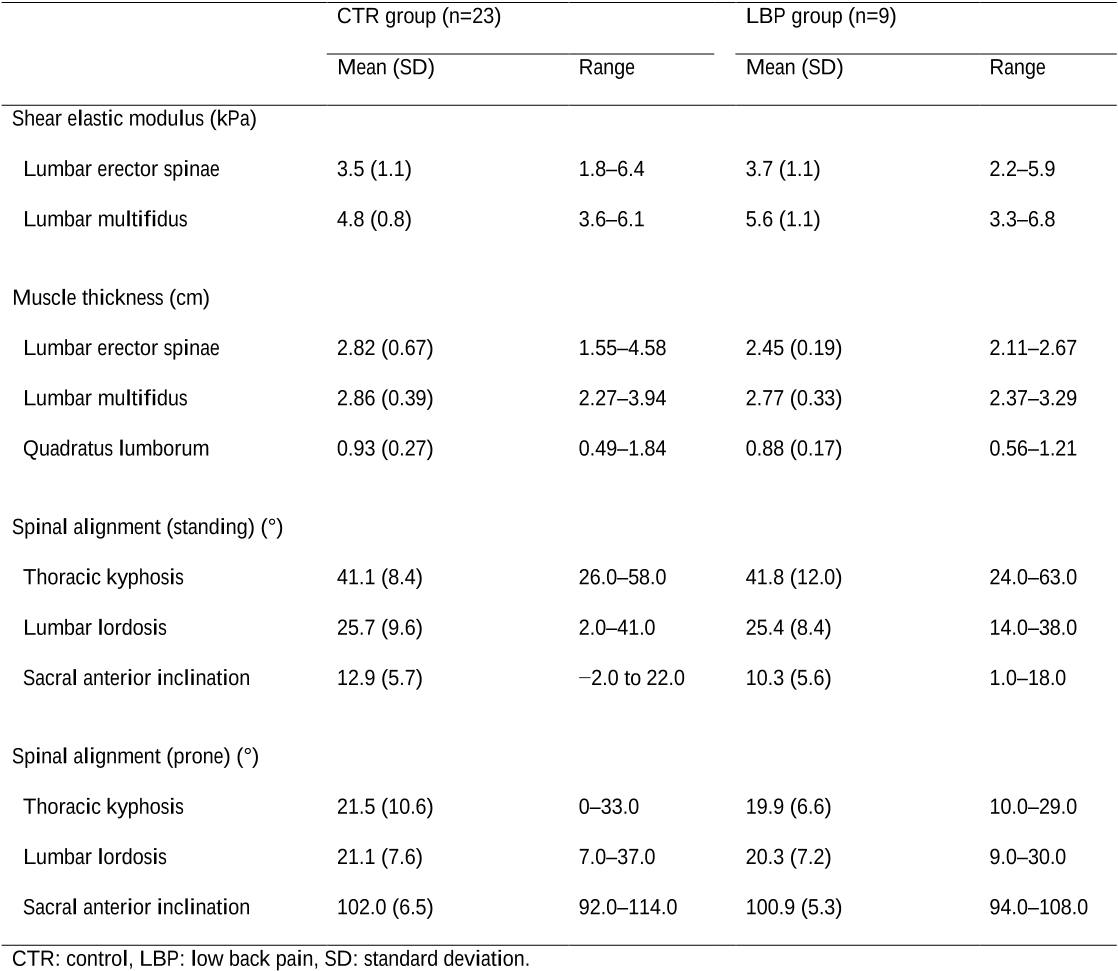Q2. What are the future works mentioned in the paper "Association of low back pain with muscle stiffness and muscle mass of the lumbar back muscles, and sagittal spinal alignment in young and middle-aged medical workers" ?
In this case, the overuse caused by muscle spasm of the lumbar multifidus muscle may lead to circulatory difficulty within the muscle, which contributes to secondary LBP occurrence in the future. Further studies should examine training for improving muscle stiffness of the lumbar multifidus muscle effectively. They targeted only the lumbar multifidus muscles in the LBP patients and suggested that no significant difference exists in the muscle stiffness of the lumbar multifidus muscle in the prone position between healthy subjects and LBP patients. The present study suggests that LBP is associated with muscle stiffness of the lumbar multifidus muscle in young and middle-aged medical workers.
Q3. What causes muscle spasm in the lumbar multifidus?
which is caused from stress on intervertebral disks or intervertebral joints, may induce muscle spasm of the lumbar multifidus muscle.
Q4. What is the reason for the association of LBP with muscle stiffness?
Circulatory difficulty within the lumbar multifidus muscle caused by overuse during the motions may contribute to an increase in muscle stiffness and LBP occurrence.
Q5. How many ROIs were set in the color-coded box?
Three ROIs with a diameter of 10 mm were set in the color-coded box, with 1 located at the center of the box and the other 2 beside the initial ROI.
Q6. What is the reason for the association of LBP with muscle stiffness of the lumbar?
A possible reason for the association of LBP with muscle stiffness of the lumbar back muscles in the prone position is the frequent trunk flexion or pelvic anterior tilt of the medical workers in the standing position during medical treatment, care, and rehabilitation, as well as frequent extension of their trunk during transferring patients.
Q7. Who was blinded to information of the groups?
The determination of the ROIs and the computation of muscle thickness and shear elastic modulus were performed by 1 examiner who was blinded to information of the groups.
Q8. What is the reason for the inconsistency in the measurements of muscle mass?
This inconsistency may be attributed to the flexion of the lumbar spine, which compensatorily becomes excessive during12medical treatment, care, rehabilitation, and transferring patients in medical workers, who have shorter body height (i.e., shorter upper extremities).
Q9. What is the effect of the shorter body height on the lumbar multifidus muscles?
shorter body height may contribute to increased muscle stiffness of the lumbar multifidus muscles, or the stress on intervertebral disks or intervertebral joints.
Q10. What is the shear elastic modulus of the lumbar erector spina?
The shear elastic modulus (G) was computed from the shear wave propagation speed (v) and the muscle mass density (ρ) using the following equation: G=ρv2 where ρ is presumed to be 1000 kg/m3 (Aubry et al., 2013).
Q11. What is the reason for the lack of measurements of muscle mass?
whether an increase in muscle stiffness of the lumbar multifidus muscle is caused by overuse or muscle spasm is unclear because the activities of the lumbar back muscles were not measured using electromyography during ultrasound measurement.




